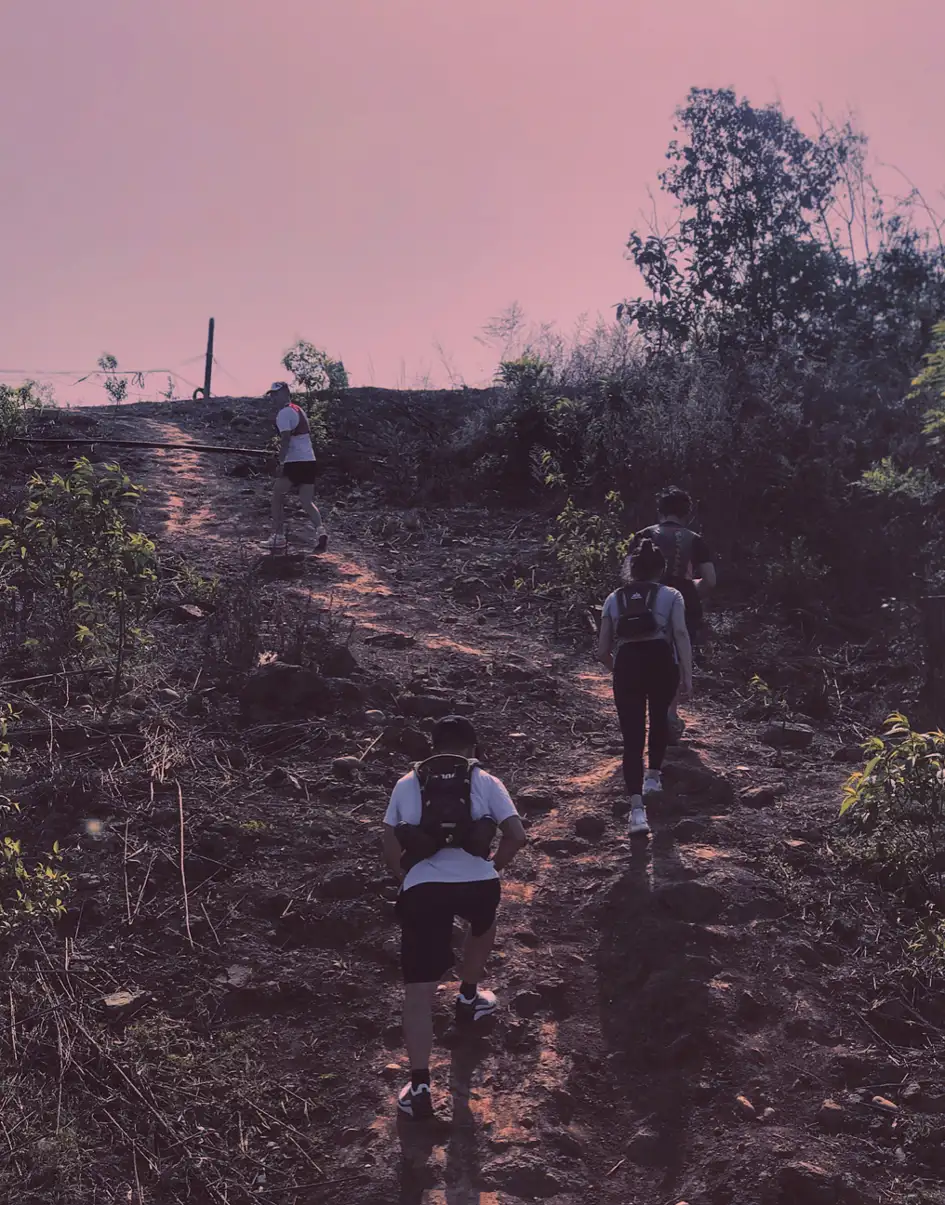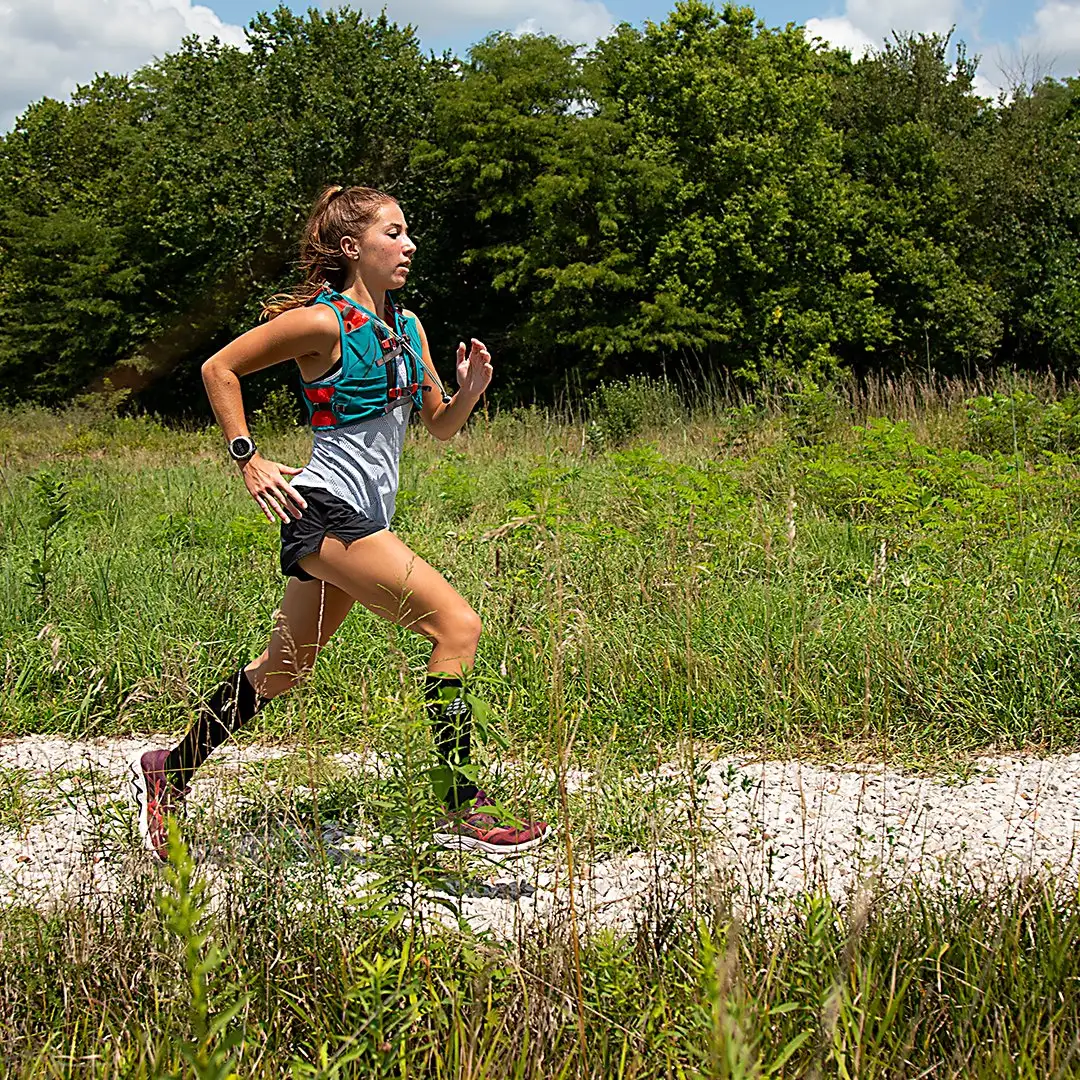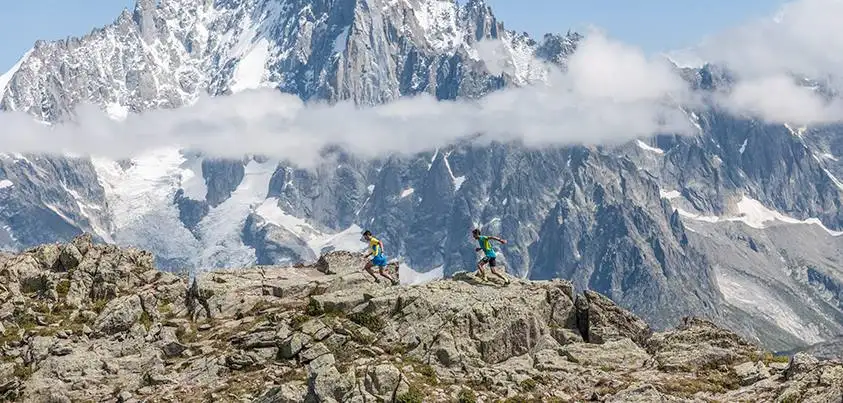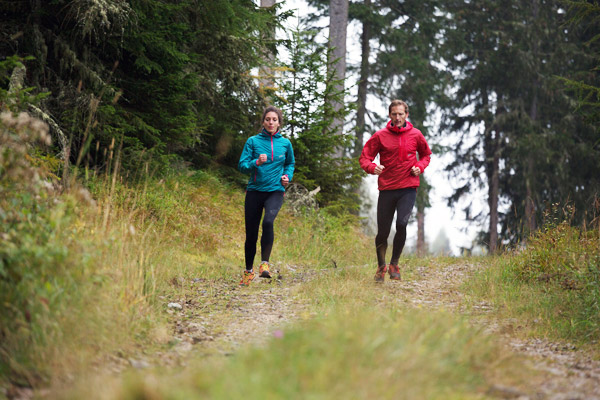“What kind of practice can I use to go uphill cross-country without being out of breath?”
“I am particularly weak when going uphill and my heart rate explodes. How do I usually train in a situation like mine?”
We received many questions like this in the background. Recently, there have been a lot of cross-country competitions. In this article, we will specifically talk about training to improve climbing ability.
In order to help everyone understand, here we will make a proportional analysis of the comprehensive uphill ability in cross-country running, so it is roughly: physical fitness accounts for 90%, technology 5%, and strategy 5%. Ultimately, fitness is key.
How to plan uphill training for cross-country running efficiently, functionally and logically?
Next, we will share a more classic training course, which is based on the training that top cross-country runners with uphill ability are already doing. For now, we will share It’s called a “climbing schedule.”
Before explaining this curriculum, we still have to talk about “functionality” and “periodization”. The two have a common premise: “begin with the end in mind” and work backwards from the goal to examine the training structure and process. The goal here is not necessarily equal to the competition. We can also use training results as the goal of planning. After we establish the goal, we can choose the venue and method of training.

Functional training concepts for trail running uphill
Dr. Kelly Starret, the author of “Agile as a Leopard”, is the world’s top strength and conditioning expert. Kelly holds [Movement and Mobility Courses] all over the world, teaching to NBA (National Basketball Association), NLB (Major League Baseball), NFL (American Football League), weightlifters, elite special forces/general military, etc. wait. In the book, Kelly defines what functional training is in a simple sentence. He said: “All movement principles, patterns, and techniques in the strength and conditioning training program must be transferable to life and special sports. “.
Using this principle as an example, when our goal is to improve the uphill ability of cross-country running, then training on mountain trails will be more functional than training on the road. However, training on the road is not completely excluded. It mainly depends on the target event. It depends on the environment, distance, and training period. For example, the famous 100-mile race Western State100 in the United States, which is highly runnable and low-tech, is very suitable for training on roads or industrial roads. In addition, road training is more convenient than mountain trail training. It helps increase speed and facilitates intensity control, and is still an indispensable training field for cross-country runners.
Let’s simply define climbing. For cross-country trails with a slope greater than 13% (including sections that require rope climbing), the “climbing schedule” introduced below will be helpful. If the slope is lower than this, such training will be It’s not functional enough and may only be used as a side dish in a game. The reason for this lies in the difference in action models. If you practice too much, it will reduce the feeling of running on the road.

How exactly does climbing training work?
● Training venue
First, we find a long staircase that takes 4 to 10 minutes to reach the top as a training environment, and use about 90% of our strength to run up. At this point you have to ask, why is it 4 to 10 minutes? This span is huge!
Experts in special climbing events can climb continuously for 5 to 6 minutes without exhausting or slowing down. The world’s top mountain climbing athletes can support their physical fitness for about 8 to 9 minutes. The rhythm is probably constant. The sprinting was so exaggerated, it was like going out without any heart. The exhaustion time for ordinary people sprinting in a vertical climb is about 2 to 3 minutes . Therefore, when designing the single distance of this training, you can evaluate it based on your own ability, and then set the distance. The shortest time should be no less than 4 minutes and the longest time no more than 10 minutes. It is best to make every trip possible. Finished on the verge of exhaustion, but not completely blown out.
Seeing this, you will find a logic. The more capable runners are, the more flexible they will be when performing this training, and the wider range of training distances they can do . On the contrary, runners with poor physical fitness are not suitable for training here for too long. distance, because when we completely explode and delay completing the training, the training will lose its due quality, and the body will also remember the movements during the struggle, which will actually affect the climbing efficiency after training.

As for the venue, unless the competition we are preparing for is a building climbing competition, such as the Shimao Vertical Climbing Competition held every year in Shanghai, it is not recommended to train in a building. The reason is that the building stairs rotate in a fixed direction, and long-term training will cause the body to One side is particularly strong, affecting balance and health. The more recommended route is in mountainous areas or in the countryside, using ladder trails or trails with a certain slope. It mainly requires the use of long and steep stairs or dirt trails. These are good special “climbing training” venues .
If there are long and high stairs in the park or square near your home, it is also feasible. Just avoid rotating at the same angle like stairs.
● Training methods
include mountain trails and dirt roads, and ladders are combined with “double-step, single-step” methods with different intensities. This training can be arranged in various cycles in different forms, and it is a very flexible training method.
No matter what kind of training combination is carried out, the first step is to find a suitable venue, put on cross-country running shoes, go to the mountain trails/stairs, and do two tests. The training intensity described in the above paragraph-the intensity is on the verge of exhaustion but not completely exhausted. Explode, complete the training when it collapses, and it will take about 4 to 10 minutes to reach the top. This makes it easy to find a training route that suits you.
Several training modes are listed for your reference:
Classic training :90% attack the trail/mountain trail, regardless of single or double steps, running or walking, just try your best to complete every trip. Make 3 to 5 trips in total, taking breaks between each trip to walk slowly back to the starting point.
Endurance training :Walk briskly throughout the entire process, adjust the pace and steps naturally, and jog downhill back to the starting point for 5 to 7 times.
Calf muscle rigidity/technical training :The whole process is carried out in the form of single-step stair running/small steps on mountain trails. Please pay attention to the rhythm of your shoulders and torso jumping up and relax. Do 3 to 5 trips, taking breaks between each trip to walk slowly back to the starting point.
Explosive strength training :Take half the distance and start from the middle of the route as the starting point of this training. Run up with all your strength for each trip, walk back to the starting point slowly during intervals, and wait until you are no longer out of breath before starting the next trip. Make 3 to 4 trips.
Things that need special attention are as follows: ● You must time
each run by a watch , because cross-country running is relatively difficult to quantify with pace. Timing by a watch each time can help you compare different strategies, movements, breathing, The changes in speed and state between runs are very important. After all, cross-country running is a sport that pays great attention to running feeling.
● Place a water bottle at the starting point and drink a few sips of water before the start of each trip. When we gasp for air, the amount of water evaporated from the throat increases and we easily become thirsty. Drinking a little water to moisten the throat can help us breathe more smoothly.
● To warm up before training, I would recommend that after performing a full body aerobics, you should run and walk easily on the stairway/mountain trail for 10 to 15 minutes and then take a short rest before you can start training.
The end of training can focus on stretching the thighs, front of the waist, hips, lower back, shoulders and nutritional supplements (foods with a carbohydrate:protein ratio of about 3:1). After resting, you can pay attention to the massage and relaxation of the above muscle groups and drink water.
Application of “climbing training”
There is no panacea training in the world. Each different training method has its own unique meaning, and the effect will be different when arranged in different cycles. If this training is regarded as a panacea without matching or switching with other training, The scope of growth will be quite limited and may even increase the risk of sports injuries (for example, only exercise once a week).
Two different types of trail runners need to be aware of when using this training method:
● A “runner” who wants to start practicing cross-country
Whether you are running on flat terrain or asphalt roads, the muscle groups and methods of exertion used are different from what we define as “climbing”. Therefore, “special adaptation” will take a longer time. In addition to muscle strength training, you can Arrange explosive training at the end of the preparation period, that is, after you have reached a certain level of muscle strength. This training can be arranged twice a week.
Explosive strength training helps improve muscle rigidity and movement efficiency, and is an important transition point between strength training and special training.
Entering the basic period, endurance training will be the focus to help improve climbing ability. The reason is that speed is based on highly developed aerobic capacity. If you only perform interval intensity classes, you will not be able to climb in middle and long distances. There are good performances in cross-country running events .
Endurance training can be done 1 to 2 times a week. Runners who already have considerable aerobic capacity can intersperse classic training once a week and start officially recording your section results. Classic training, from the basic period to the adjustment period before the competition, is the key point that needs to be arranged-if your target event is mainly climbing.
After all, if you want to be a good trail runner, you can’t just walk uphill slowly. But we recommend that friends who are just starting out must take it step by step.
The uphill climb for experts is completely different from the uphill climb on ordinary roads. To simply describe it, it is like “running on tiptoes.” Making good use of the forefoot landing can bring the landing position closer to the center of the body’s center of gravity, and use more calf strength to reduce the load on the thighs. If the technique is good enough, you will find that running seems easier than walking.
The single-step stair run in the calf muscle stiffness/technique schedule is a very good cross-country uphill running exercise. It can help establish good movements with a more fixed cadence. Rigidity/technical training of the calf muscles can be performed from the late basic period to the peak period, once a week.

● Cross-country enthusiasts,
if you have been regularly training for cross-country running and long-distance mountain climbing, you will also have developed corresponding muscle groups by practicing this sport for a long time. Compared with runners who have no cross-country experience, the special adaptation period can be longer. Shorter.
But generally speaking, climbers and cross-country enthusiasts have less concept of “physical training” and often ignore the importance of muscle strength training, or think that as long as they climb mountains, they are doing muscle strength training. This statement is not correct. Mountain climbing can only train muscle endurance. Muscle strength training is a science with so many contents and effects that it is difficult to list them all here. In short, mountain climbing alone cannot replace the effect of muscle strength training, so cross-country enthusiasts still have to spend some time in the preparation period to adjust the body into a more balanced state. At the end of the preparation period, it will also be recommended to conduct explosive strength training 1 to 2 times a week and integrate our muscle strength training results.
I usually run cross-country, do I still need to practice during the basic period?
If you want to strengthen your “climbing” ability, the climbing training introduced today will be helpful to you. Although it is boring, it is an easy way to quantify the effectiveness of training because it is relatively stable, has low environmental variables, and is easy to control the intensity and movement.
Compared with runners who have no cross-country experience, cross-country runners who are accustomed to spending long periods of time in the mountains and forests do not need to specifically practice endurance on stairs. If you want to strengthen your climbing ability or are preparing for a climbing competition, then classic training is important. The entire cycle can be adjusted up to 2 weeks before the competition. Especially when preparing for a building climbing competition, the training of the energy system is almost done. It prefers anaerobic blocks, so the planning of the intensive period is very important. Classic training can be arranged three times a week.
No matter what kind of distance or project climbing you want to strengthen, “periodization” is still the key. Because we are human beings, we will get tired and tired. However, precisely because we will get tired, we will make progress and run faster and further because of this compensation. When a cycle ends, the test also needs to be re-tested and the training adjusted based on the results.
Garmin users should be good at using the built-in “Hill Climb Score” function in the watch . It can help you understand your special ability in uphill running, understand changes in physical fitness based on maximum oxygen uptake and training history, and provide scores and suggestions. . In addition, there are two sub-indexes: the [climbing muscle strength] index suitable for short and steep slopes and the [climbing endurance] index suitable for long and gentle slopes . The purpose of this training analysis is to understand how much your efforts contribute to improving your hill strength and hill endurance. These two sub-indicators complement each other and are helpful in building overall hill running ability.
Hill running also has key biomechanical differences from flat running. Hill running generally has a faster cadence, shorter swing duration, internal mechanical workings of all joints, and more power output. Because of the higher power requirements and the different biomechanics of using different muscle groups than running on flat ground, improving uphill running requires special effort to be successful.
The training we share with you this time is the same, except that its goal is to simply improve climbing ability. However, when training for overall cross-country running, you should be stimulated by different trainings and avoid just doing a single training. In this way Only those who train are more interesting and can get a sense of accomplishment from more stable and comprehensive growth!




